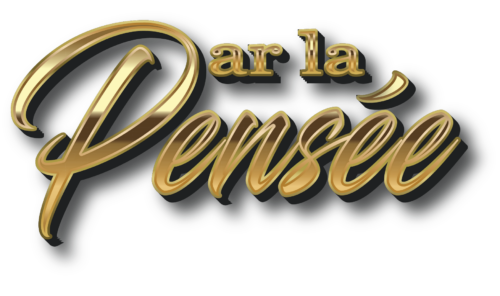Why some of us always ask questions while others are quick to tell the world what to do? Why are we hiding our emotions while some expose theirs freely and sometimes put everyone around in an uncomfortable state (too much information, you know what I mean?). Why are some people so quick at making decisions while others need 20 different proofs and papers to support their decision? Why are some people overly friendly, outgoing, the life of the party, while most feel threaten when having to speak or sell their services to a stranger?
 In 1928 American psychologist William Mouton Marston published “Emotions of Normal People”, which presented the findings of his research on personality and human behavior. Unlike many psychologists, during the 1920s and ’30s, Marston was more interested in the behavior of the general or “typical” population, as opposed to abnormal psychology. Marston’s work recognized and defined four primary emotions and created the DISCclassification system for the emotions and behaviors of so-called “regular” people. He claimed that these four behavioral types came from people’s sense of self and their interaction with the environment.
In 1928 American psychologist William Mouton Marston published “Emotions of Normal People”, which presented the findings of his research on personality and human behavior. Unlike many psychologists, during the 1920s and ’30s, Marston was more interested in the behavior of the general or “typical” population, as opposed to abnormal psychology. Marston’s work recognized and defined four primary emotions and created the DISCclassification system for the emotions and behaviors of so-called “regular” people. He claimed that these four behavioral types came from people’s sense of self and their interaction with the environment.
Two decades later, psychologist Walter Clarke created an assessment test which used Marston’s DISC model. This assessment was intended to be used by businesses as a tool to assist them in choosing qualified employees. From its original version as a checklist, it went on to be developed as a ‘self-description’ tool by psychologist John Geier.
The DISC model has undergone continuous evolution for nearly 90 years. While today there is a variety of personality profile self-assessment tools available, Maureen Hagan and myself have created a fun and easy “STYLE-L.I.S.T.” self-assessment, adapted from a simplified version of the DISC model.
This self-assessment takes only minutes to complete and will help you learn more about yourself, others, and how you naturally behave in situations where interpersonal emotions are a factor. Once again, it is important to know that while your profile is based on a blend of four primary personality styles, we will help you identify your primary and secondary styles for the purposes of self-discovery.
Also, by knowing yourself better, you can build on your own personality style and as you begin to recognize others’ styles, you can adapt your own to positively influence your interactions with others.
Almost fifty percent of all people exhibit behaviour combining three of the four styles (all three scores are close) and these people tend to be more flexible and adaptable than others. Fifty per cent of all people exhibit behaviour combining two styles and only a very small per cent of people exhibit behaviour primarily from one style. Therefore, we should not ‘stereotype’ anyone.
Fun fact: The designer of the original DISC profile also created the comic Wonder Woman.
DO YOU KNOW YOUR STYLE?
The personality style of people is unique to each individual. The definition of personality is often explained as the sum total of all the behavioural characteristics, by means of which an individual is recognized as being unique. In order to understand their uniqueness, we observed their differences. By looking at the ways that people differ, we were able to divide these differences into four major themes, which got broken down into groups, because to understand each of them individually, would be close to impossible. We have identified four groups that characterize a person’s style or personality type.
We have identified the four styles with the acronym L.I.S.T.
L—Leader, I—Influencer, S—Supporter, T—Thinker. We will refer to the personality types as STYLE-L.I.S.T. throughout the book. Before we explain each style, let us mention the benefits of knowing your own style and the styles of others.
The essence of using personality-style types is to help you identify your behavioural style and pinpoint what you might choose to do to become an even more effective and successful person. Before you can create relationships with others, it is imperative to know who you are and what drives you. Knowing your STYLE-L.I.S.T. profile will help your ‘natural’ style and will give you insights about areas where you may want to change, strengthen or adapt based on the interactions you have with others.
Discovering your Personality STYLE-L.I.S.T. profile will help you know yourself and be more self-aware, aiding you to:
- Better understand why you interact with some people easier than others
- Use your style strengths to ask for what you want in an effective way
- Understand the differences that exist between people and learn how to identify each style quickly
- Understand how you may be perceived by others
- Uncover potential areas of interpersonal complements and conflict with others
KNOW HOW YOU INTERACT WITH OTHER PERSONALITY STYLES
Understanding the similarities and differences that exist between people allows you to build on strengths, yours and theirs. The information you will discover is designed to guide you towards establishing strong and happy long-lasting relationships through excellent communication.
Knowing yourself and being able to effectively relate to and connect with others sets you up for having great relationships with people. You will commonly hear that “it takes two to tango”, and just like this passionate dance between two people, where each of the dancers understands their own individual style of dance, they also know how best to connect with their partner, thus being able to bring out the best of both of them in the dance.
Discovering the Personality STYLE-L.I.S.T. profile of those around you will help you to identify with them and to learn how other styles like to be treated (communicated to). You will be able to tailor your communication style and your behaviour with those you identify as having a different profile than yourself. It will allow you to train your staff, associates and clients in their primary styles, establish strong relationships and create deeper connections with others. It will also improve team dynamics and the ability to get along with multiple personality styles and allow you to present and sell your services in a style that other people can relate and connect to.
“There are so many different walks of life, so many different personalities in the world. And no longer do you have to be a chameleon and try and adapt to that environment — you can truly be yourself.”
Hope Solo
Knowing your own profile and dominating style will help you better understand why you interact with some people easier than others. Having this insight into personality profiles will also help you tailor your communication style and even your behaviour with those you identify, with a different Personality profile then yourself. The most important thing to know is that by knowing more about yourself and your natural personality profile, you will be more successful in relating to and adapting your approach based upon those you interact and work with or with whom you have a personal relationship.
You can get the STYLE-L.I.S.T. Test in THINK Yourself® A RELATIONSHIPS PRO book here, which contains all the explanations and explanations tools, or you can simply download the free test here.

